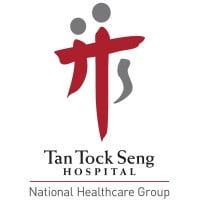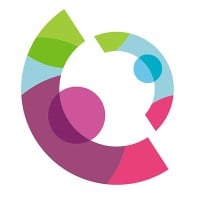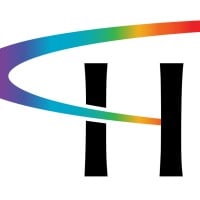
Tan Tock Seng Hospital Company Cyber Security Posture
ttsh.com.sgTan Tock Seng Hospital is the flagship hospital of the National Healthcare Group and part of Singapore’s Public Healthcare System. As a pioneering hospital with strong roots in the community for over 180 years, TTSH is recognised as the People’s Hospital, serving a resident population of 1.4 Million living in Central Singapore. Together, with 70 community partners and 80 community health posts, it brings care beyond the hospital into the community as an integrated care organisation – Central Health. As one of the largest multi-disciplinary hospitals in Singapore, TTSH operates more than 1700 beds with centres of excellence including the National Centre for Infectious Diseases (NCID), Institute for Geriatrics & Active Ageing (IGA), NHG Eye Institute (NHGEI), TTSH Rehabilitation Centre, and Ang Mo Kio Specialist Centre (AMKSC). TTSH’s 600-bed Integrated Care Hub will be ready in 2023 to provide for subacute care and rehabilitation. As a healthcare leader in population health, systems innovation, health technologies and workforce transformation, TTSH hosts Singapore’s largest purpose-built innovation centre for healthcare – the Ng Teng Fong Centre for Healthcare Innovation (CHI) and its Co-Learning Network of 37 local and international partners. Show more Show less
TTSH Company Details
tan-tock-seng-hospital
10,001+ employees
0
62
Hospitals and Health Care
ttsh.com.sg
3
TAN_7279118
In-progress
Between 800 and 900
This score is AI-generated and less favored by cyber insurers, who prefer the TPRM score.
 TTSH Global Score
TTSH Global Score.png)

Tan Tock Seng Hospital Company Scoring based on AI Models
| Model Name | Date | Description | Current Score Difference | Score |
|---|---|---|---|---|
| AVERAGE-Industry | 03-12-2025 | This score represents the average cybersecurity rating of companies already scanned within the same industry. It provides a benchmark to compare an individual company's security posture against its industry peers. | N/A | Between 800 and 900 |
Tan Tock Seng Hospital Company Cyber Security News & History
| Entity | Type | Severity | Impact | Seen | Url ID | Details | View |
|---|
Tan Tock Seng Hospital Company Subsidiaries

Tan Tock Seng Hospital is the flagship hospital of the National Healthcare Group and part of Singapore’s Public Healthcare System. As a pioneering hospital with strong roots in the community for over 180 years, TTSH is recognised as the People’s Hospital, serving a resident population of 1.4 Million living in Central Singapore. Together, with 70 community partners and 80 community health posts, it brings care beyond the hospital into the community as an integrated care organisation – Central Health. As one of the largest multi-disciplinary hospitals in Singapore, TTSH operates more than 1700 beds with centres of excellence including the National Centre for Infectious Diseases (NCID), Institute for Geriatrics & Active Ageing (IGA), NHG Eye Institute (NHGEI), TTSH Rehabilitation Centre, and Ang Mo Kio Specialist Centre (AMKSC). TTSH’s 600-bed Integrated Care Hub will be ready in 2023 to provide for subacute care and rehabilitation. As a healthcare leader in population health, systems innovation, health technologies and workforce transformation, TTSH hosts Singapore’s largest purpose-built innovation centre for healthcare – the Ng Teng Fong Centre for Healthcare Innovation (CHI) and its Co-Learning Network of 37 local and international partners. Show more Show less
Access Data Using Our API

Get company history
.png)
TTSH Cyber Security News
Transforming Healthcare With Technology
Our platform solutions significantly enhance operational efficiency and alleviate stress on hospital capacity, ensuring a seamless patient journey from ...
IEM-UEM Group Global Excellence & Leadership Awards 2025 Held at NUSS, Singapore – Honoring Visionaries in Technology, Innovation, and Society
The event celebrated and recognized some of the most eminent global personalities for their outstanding contributions to the fields of ...
Meet the Women in GovTech 2024
Meet the Women in GovTech 2024. Cambodia. Chhun Sokhour, UX/UI Designer, Technical Team, General Secretariat of the Digital Government Committee ...
Tan Tock Seng Hospital develops AI support tool for blood disease diagnosis with ASUS
Tan Tock Seng Hospital develops AI support tool for blood disease diagnosis with ASUS. It was found to have 91% accuracy in classifying white ...
Singapore public health services hit by DDoS attacks
Hackers disrupted internet connectivity in public healthcare institutions in Singapore this week with distributed denial-of-service (DDoS) ...
Tan Tock Seng Hospital develops virtual reality for staff training
Tan Tock Seng Hospital develops virtual reality for staff training. Virtual Reality (VR) training is scalable and creates a risk-free ...
RadiLogic: Bringing AI into Radiology
RadiLogic's AI capabilities detect COVID-19 pneumonia in under 3 seconds with a GPU workstation, achieving an accuracy area under the curve (AUC) ...
Singapore Public Hospitals Outage: Overcoming Long Downtime
Discover how Singapore public hospitals outage caused a long downtime while ensuring uninterrupted patient care.
Cyberattack caused 7-hour internet outage that hit public hospitals, polyclinics; attacks continuing: Synapxe
The seven-hour disruption to the websites of several public healthcare institutions on Wednesday (Nov 1) was due to a cyberattack.

TTSH Similar Companies

Kailash Healthcare Ltd
Kailash Group of Hospitals have been ranked amongst the top & best hospitals in India for advanced medical services touching the lives of over million patients. Over the past four decades, Kailash Group’s transformative journey has laid a legacy of excellence in Indian healthcare with extending its

Henry Ford Health
*Job seekers: please be aware of fraudulent job postings and phishing scams via LinkedIn. Henry Ford Health only contacts applicants through our human resources department and via a corporate email address. Here are some tips to be aware of: http://ow.ly/Kc0o50EKory Serving communities across Mic

Dr. Sulaiman Al Habib Medical Group
Leading Private Healthcare Provider in the Middle East With a vision to be the most trusted healthcare provider in medical excellence and patient experience globally, Dr. Sulaiman Al-Habib Medical Group (HMG) has become the largest provider of comprehensive healthcare services in the Middle East. A

Cincinnati Children's
Cincinnati Children’s, a nonprofit academic medical center established in 1883, offers services from well-child care to treatment for the most rare and complex conditions. It is the Department of Pediatrics at the University of Cincinnati College of Medicine and trains more than 600 residents and cl

Bupa
Bupa's purpose is helping people live longer, healthier, happier lives and making a better world. We are an international healthcare company serving over 38 million customers worldwide. With no shareholders, we reinvest profits into providing more and better healthcare for the benefit of current an

Highmark Health
A national blended health organization, Highmark Health and our leading businesses support millions of customers with products, services and solutions closely aligned to our mission of creating remarkable health experiences, freeing people to be their best. Headquartered in Pittsburgh, we're region

Frequently Asked Questions (FAQ) on Cybersecurity Incidents
TTSH CyberSecurity History Information
Total Incidents: According to Rankiteo, TTSH has faced 0 incidents in the past.
Incident Types: As of the current reporting period, TTSH has not encountered any cybersecurity incidents.
Total Financial Loss: The total financial loss from these incidents is estimated to be {total_financial_loss}.
Cybersecurity Posture: The company's overall cybersecurity posture is described as Tan Tock Seng Hospital is the flagship hospital of the National Healthcare Group and part of Singapore’s Public Healthcare System. As a pioneering hospital with strong roots in the community for over 180 years, TTSH is recognised as the People’s Hospital, serving a resident population of 1.4 Million living in Central Singapore. Together, with 70 community partners and 80 community health posts, it brings care beyond the hospital into the community as an integrated care organisation – Central Health. As one of the largest multi-disciplinary hospitals in Singapore, TTSH operates more than 1700 beds with centres of excellence including the National Centre for Infectious Diseases (NCID), Institute for Geriatrics & Active Ageing (IGA), NHG Eye Institute (NHGEI), TTSH Rehabilitation Centre, and Ang Mo Kio Specialist Centre (AMKSC). TTSH’s 600-bed Integrated Care Hub will be ready in 2023 to provide for subacute care and rehabilitation. As a healthcare leader in population health, systems innovation, health technologies and workforce transformation, TTSH hosts Singapore’s largest purpose-built innovation centre for healthcare – the Ng Teng Fong Centre for Healthcare Innovation (CHI) and its Co-Learning Network of 37 local and international partners. Show more Show less.
Detection and Response: The company detects and responds to cybersecurity incidents through {description_of_detection_and_response_process}.
Incident Details
Incident 1: Ransomware Attack
Title: {Incident_Title}
Description: {Brief_description_of_the_incident}
Date Detected: {Detection_Date}
Date Publicly Disclosed: {Disclosure_Date}
Date Resolved: {Resolution_Date}
Type: {Type_of_Attack}
Attack Vector: {Attack_Vector}
Vulnerability Exploited: {Vulnerability}
Threat Actor: {Threat_Actor}
Motivation: {Motivation}
Incident 2: Data Breach
Title: {Incident_Title}
Description: {Brief_description_of_the_incident}
Date Detected: {Detection_Date}
Date Publicly Disclosed: {Disclosure_Date}
Date Resolved: {Resolution_Date}
Type: {Type_of_Attack}
Attack Vector: {Attack_Vector}
Vulnerability Exploited: {Vulnerability}
Threat Actor: {Threat_Actor}
Motivation: {Motivation}
Common Attack Types: As of now, the company has not encountered any reported incidents involving common cyberattacks.
Identification of Attack Vectors: The company identifies the attack vectors used in incidents through {description_of_identification_process}.
Impact of the Incidents
Incident 1: Ransomware Attack
Financial Loss: {Financial_Loss}
Data Compromised: {Data_Compromised}
Systems Affected: {Systems_Affected}
Downtime: {Downtime}
Operational Impact: {Operational_Impact}
Conversion Rate Impact: {Conversion_Rate_Impact}
Revenue Loss: {Revenue_Loss}
Customer Complaints: {Customer_Complaints}
Brand Reputation Impact: {Brand_Reputation_Impact}
Legal Liabilities: {Legal_Liabilities}
Identity Theft Risk: {Identity_Theft_Risk}
Payment Information Risk: {Payment_Information_Risk}
Incident 2: Data Breach
Financial Loss: {Financial_Loss}
Data Compromised: {Data_Compromised}
Systems Affected: {Systems_Affected}
Downtime: {Downtime}
Operational Impact: {Operational_Impact}
Conversion Rate Impact: {Conversion_Rate_Impact}
Revenue Loss: {Revenue_Loss}
Customer Complaints: {Customer_Complaints}
Brand Reputation Impact: {Brand_Reputation_Impact}
Legal Liabilities: {Legal_Liabilities}
Identity Theft Risk: {Identity_Theft_Risk}
Payment Information Risk: {Payment_Information_Risk}
Average Financial Loss: The average financial loss per incident is {average_financial_loss}.
Commonly Compromised Data Types: The types of data most commonly compromised in incidents are {list_of_commonly_compromised_data_types}.
Incident 1: Ransomware Attack
Entity Name: {Entity_Name}
Entity Type: {Entity_Type}
Industry: {Industry}
Location: {Location}
Size: {Size}
Customers Affected: {Customers_Affected}
Incident 2: Data Breach
Entity Name: {Entity_Name}
Entity Type: {Entity_Type}
Industry: {Industry}
Location: {Location}
Size: {Size}
Customers Affected: {Customers_Affected}
Response to the Incidents
Incident 1: Ransomware Attack
Incident Response Plan Activated: {Yes/No}
Third Party Assistance: {Yes/No}
Law Enforcement Notified: {Yes/No}
Containment Measures: {Containment_Measures}
Remediation Measures: {Remediation_Measures}
Recovery Measures: {Recovery_Measures}
Communication Strategy: {Communication_Strategy}
Adaptive Behavioral WAF: {Adaptive_Behavioral_WAF}
On-Demand Scrubbing Services: {On_Demand_Scrubbing_Services}
Network Segmentation: {Network_Segmentation}
Enhanced Monitoring: {Enhanced_Monitoring}
Incident 2: Data Breach
Incident Response Plan Activated: {Yes/No}
Third Party Assistance: {Yes/No}
Law Enforcement Notified: {Yes/No}
Containment Measures: {Containment_Measures}
Remediation Measures: {Remediation_Measures}
Recovery Measures: {Recovery_Measures}
Communication Strategy: {Communication_Strategy}
Adaptive Behavioral WAF: {Adaptive_Behavioral_WAF}
On-Demand Scrubbing Services: {On_Demand_Scrubbing_Services}
Network Segmentation: {Network_Segmentation}
Enhanced Monitoring: {Enhanced_Monitoring}
Incident Response Plan: The company's incident response plan is described as {description_of_incident_response_plan}.
Third-Party Assistance: The company involves third-party assistance in incident response through {description_of_third_party_involvement}.
Data Breach Information
Incident 2: Data Breach
Type of Data Compromised: {Type_of_Data}
Number of Records Exposed: {Number_of_Records}
Sensitivity of Data: {Sensitivity_of_Data}
Data Exfiltration: {Yes/No}
Data Encryption: {Yes/No}
File Types Exposed: {File_Types}
Personally Identifiable Information: {Yes/No}
Prevention of Data Exfiltration: The company takes the following measures to prevent data exfiltration: {description_of_prevention_measures}.
Handling of PII Incidents: The company handles incidents involving personally identifiable information (PII) through {description_of_handling_process}.
Ransomware Information
Incident 1: Ransomware Attack
Ransom Demanded: {Ransom_Amount}
Ransom Paid: {Ransom_Paid}
Ransomware Strain: {Ransomware_Strain}
Data Encryption: {Yes/No}
Data Exfiltration: {Yes/No}
Ransom Payment Policy: The company's policy on paying ransoms in ransomware incidents is described as {description_of_ransom_payment_policy}.
Data Recovery from Ransomware: The company recovers data encrypted by ransomware through {description_of_data_recovery_process}.
Regulatory Compliance
Incident 1: Ransomware Attack
Regulations Violated: {Regulations_Violated}
Fines Imposed: {Fines_Imposed}
Legal Actions: {Legal_Actions}
Regulatory Notifications: {Regulatory_Notifications}
Incident 2: Data Breach
Regulations Violated: {Regulations_Violated}
Fines Imposed: {Fines_Imposed}
Legal Actions: {Legal_Actions}
Regulatory Notifications: {Regulatory_Notifications}
Regulatory Frameworks: The company complies with the following regulatory frameworks regarding cybersecurity: {list_of_regulatory_frameworks}.
Ensuring Regulatory Compliance: The company ensures compliance with regulatory requirements through {description_of_compliance_measures}.
Lessons Learned and Recommendations
Incident 1: Ransomware Attack
Lessons Learned: {Lessons_Learned}
Incident 2: Data Breach
Lessons Learned: {Lessons_Learned}
Incident 1: Ransomware Attack
Recommendations: {Recommendations}
Incident 2: Data Breach
Recommendations: {Recommendations}
Key Lessons Learned: The key lessons learned from past incidents are {list_of_key_lessons_learned}.
Implemented Recommendations: The company has implemented the following recommendations to improve cybersecurity: {list_of_implemented_recommendations}.
References
Additional Resources: Stakeholders can find additional resources on cybersecurity best practices at {list_of_additional_resources}.
Investigation Status
Incident 1: Ransomware Attack
Investigation Status: {Investigation_Status}
Incident 2: Data Breach
Investigation Status: {Investigation_Status}
Communication of Investigation Status: The company communicates the status of incident investigations to stakeholders through {description_of_communication_process}.
Stakeholder and Customer Advisories
Incident 1: Ransomware Attack
Stakeholder Advisories: {Stakeholder_Advisories}
Customer Advisories: {Customer_Advisories}
Incident 2: Data Breach
Stakeholder Advisories: {Stakeholder_Advisories}
Customer Advisories: {Customer_Advisories}
Advisories Provided: The company provides the following advisories to stakeholders and customers following an incident: {description_of_advisories_provided}.
Initial Access Broker
Incident 1: Ransomware Attack
Entry Point: {Entry_Point}
Reconnaissance Period: {Reconnaissance_Period}
Backdoors Established: {Backdoors_Established}
High Value Targets: {High_Value_Targets}
Data Sold on Dark Web: {Yes/No}
Incident 2: Data Breach
Entry Point: {Entry_Point}
Reconnaissance Period: {Reconnaissance_Period}
Backdoors Established: {Backdoors_Established}
High Value Targets: {High_Value_Targets}
Data Sold on Dark Web: {Yes/No}
Monitoring and Mitigation of Initial Access Brokers: The company monitors and mitigates the activities of initial access brokers through {description_of_monitoring_and_mitigation_measures}.
Post-Incident Analysis
Incident 1: Ransomware Attack
Root Causes: {Root_Causes}
Corrective Actions: {Corrective_Actions}
Incident 2: Data Breach
Root Causes: {Root_Causes}
Corrective Actions: {Corrective_Actions}
Post-Incident Analysis Process: The company's process for conducting post-incident analysis is described as {description_of_post_incident_analysis_process}.
Corrective Actions Taken: The company has taken the following corrective actions based on post-incident analysis: {list_of_corrective_actions_taken}.
Additional Questions
General Information
Ransom Payment History: The company has {paid/not_paid} ransoms in the past.
Last Ransom Demanded: The amount of the last ransom demanded was {last_ransom_amount}.
Last Attacking Group: The attacking group in the last incident was {last_attacking_group}.
Incident Details
Most Recent Incident Detected: The most recent incident detected was on {most_recent_incident_detected_date}.
Most Recent Incident Publicly Disclosed: The most recent incident publicly disclosed was on {most_recent_incident_publicly_disclosed_date}.
Most Recent Incident Resolved: The most recent incident resolved was on {most_recent_incident_resolved_date}.
Impact of the Incidents
Highest Financial Loss: The highest financial loss from an incident was {highest_financial_loss}.
Most Significant Data Compromised: The most significant data compromised in an incident was {most_significant_data_compromised}.
Most Significant System Affected: The most significant system affected in an incident was {most_significant_system_affected}.
Response to the Incidents
Third-Party Assistance in Most Recent Incident: The third-party assistance involved in the most recent incident was {third_party_assistance_in_most_recent_incident}.
Containment Measures in Most Recent Incident: The containment measures taken in the most recent incident were {containment_measures_in_most_recent_incident}.
Data Breach Information
Most Sensitive Data Compromised: The most sensitive data compromised in a breach was {most_sensitive_data_compromised}.
Number of Records Exposed: The number of records exposed in the most significant breach was {number_of_records_exposed}.
Ransomware Information
Highest Ransom Demanded: The highest ransom demanded in a ransomware incident was {highest_ransom_demanded}.
Highest Ransom Paid: The highest ransom paid in a ransomware incident was {highest_ransom_paid}.
Regulatory Compliance
Highest Fine Imposed: The highest fine imposed for a regulatory violation was {highest_fine_imposed}.
Most Significant Legal Action: The most significant legal action taken for a regulatory violation was {most_significant_legal_action}.
Lessons Learned and Recommendations
Most Significant Lesson Learned: The most significant lesson learned from past incidents was {most_significant_lesson_learned}.
Most Significant Recommendation Implemented: The most significant recommendation implemented to improve cybersecurity was {most_significant_recommendation_implemented}.
References
Most Recent Source: The most recent source of information about an incident is {most_recent_source}.
Most Recent URL for Additional Resources: The most recent URL for additional resources on cybersecurity best practices is {most_recent_url}.
Investigation Status
Current Status of Most Recent Investigation: The current status of the most recent investigation is {current_status_of_most_recent_investigation}.
Stakeholder and Customer Advisories
Most Recent Stakeholder Advisory: The most recent stakeholder advisory issued was {most_recent_stakeholder_advisory}.
Most Recent Customer Advisory: The most recent customer advisory issued was {most_recent_customer_advisory}.
Initial Access Broker
Most Recent Entry Point: The most recent entry point used by an initial access broker was {most_recent_entry_point}.
Most Recent Reconnaissance Period: The most recent reconnaissance period for an incident was {most_recent_reconnaissance_period}.
Post-Incident Analysis
Most Significant Root Cause: The most significant root cause identified in post-incident analysis was {most_significant_root_cause}.
Most Significant Corrective Action: The most significant corrective action taken based on post-incident analysis was {most_significant_corrective_action}.
What Do We Measure?
















Every week, Rankiteo analyzes billions of signals to give organizations a sharper, faster view of emerging risks. With deeper, more actionable intelligence at their fingertips, security teams can outpace threat actors, respond instantly to Zero-Day attacks, and dramatically shrink their risk exposure window.
These are some of the factors we use to calculate the overall score:
Identify exposed access points, detect misconfigured SSL certificates, and uncover vulnerabilities across the network infrastructure.
Gain visibility into the software components used within an organization to detect vulnerabilities, manage risk, and ensure supply chain security.
Monitor and manage all IT assets and their configurations to ensure accurate, real-time visibility across the company's technology environment.
Leverage real-time insights on active threats, malware campaigns, and emerging vulnerabilities to proactively defend against evolving cyberattacks.




